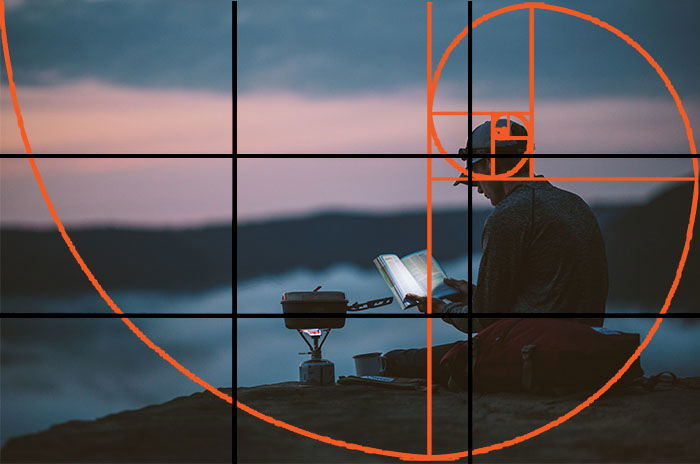How to Break the Rules of Photography Composition
There are a lot of rules when it comes to composition in photography. And for the most part, following them will produce good results. But what happens when you break the rules?
In this article, we’ll explore why you should be breaking the rules of composition. Then we can get into some practical tips on how to do it effectively. We’ll discuss the benefits of breaking the rules. And we’ve got great photos that violate the traditional rules of composition for inspiration!
Breaking The Rules Of Composition: You Need to Know The Rules to Break Them
This almost goes without saying. You must learn the rules before you can break them effectively. And they will stick with you for a lifetime, so it’s worth learning them well. Masters of photography know compositional rules so well that they become instinctual.
Composition means “putting together.” It’s the way you arrange what you see in your camera's viewfinder. If the elements of your photo are not put together well, your photos will lack the wow factor to grab your viewer’s attention.
As with many aspects of photography, it's very subjective. But there’s a clear difference between breaking the rules and simply not knowing them. You must learn them to be intentional with how you break them.

©Kevin Landwer-Johan
What Are the Most Common Composition Rules?
The famous American photographer Edward Weston expressed his views on applying photography composition rules well. He said, "Now, to consult the rules of composition before making a picture is a little like consulting the law of gravitation before going for a walk."
Photography composition has a number of popular photography rules. Here are some of the most popular ones.
- The rule of thirds
- Frame within a frame
- Leading lines
- Strong diagonals
- Negative space
- Rule of odds
- Dynamic tension
- Symmetry/balance
- The golden ratio
- Patterns
- Depth
These are a few examples. There are many more and variations on all of them. This may seem like a lot, but they are easy and fun to learn. And knowing them means you’ll know which rule works best for each shot you take!
Choose the best rules of composition to apply when you are preparing to take your photo. The more compositional techniques you know, the more shooting options you have.
When you see a natural frame within your frame that will enhance your subject, chose your position and point of view well. If there are strong leading lines, work with them to draw attention to your subject. Don't create a photo using the rule of thirds when it clearly won't work.

©Kevin Landwer-Johan
How to Get Better at Photography Composition
Next time you’re out shooting, try composing every photo you take with a strong foreground element of every photo to create depth. Or you might choose to photograph compositions where you can apply the rule of odds. Whichever rule you choose, stick to it for the whole photo shoot.
The best way to get better at something is to practice it. And sticking to one composition rule for your whole photo session will deepen your understanding of it in a practical way.
Make yourself a list of composition rules. You could use the one above. Then set yourself a goal to make ten photos using each rule. Create separate folders in your computer to store the photos—one for each rule.
Comparing the different photos using the same rules will help you learn the rules and see how your photography is improving.

©Kevin Landwer-Johan
How to Break the Rules for Creative Results
You don’t always need to rigidly apply compositional rules in your photos. Stay flexible! Just be ready to bend or break them if they’re not working for your photograph.
You might line up a photo with the rule of thirds in mind but then can't find balance with your subject right on a third line in your composition. In that case, experiment. Move your camera so your subject is closer to the edge of the frame. Try with your subject closer to the center.
Always try different compositions when shooting a subject. Sometimes it’s the unconventional ones that turn out the best.
By turning my camera upwards at this temple, I was able to avoid seeing the crowds of tourists there. The shapes make a strong design. And the contrast between the gold and blue makes the picture really pop. Had I been more conventional in my approach, the image would have been very cluttered and not nearly as interesting.

©Kevin Landwer-Johan
Change Your Point of View
Never settle for the first angle you think of. Take a few moments to look around to see if there’s a better one. If you only take photos from the first perspective you find, you'll miss some creative opportunities.
While the first, most obvious angle might produce a good picture, others will inevitably take a similar one. Stretch your imagination and discover a few more interesting perspectives from which to take pictures.
And don’t just stop at your second choice! Find three or four angles to push your compositions to more creative photography.
I stood to one side to take this photo of the three Hmong hill tribe girls. They were posing for photos, and I took it while standing with other photographers. It's a nice picture because they look great, but not such a compelling composition.
So I moved around to the side of the group and composed this photo, which is a much stronger composition than the first shooting position.

©Kevin Landwer-Johan
Experiment with Different Angles
Taking photos always from eye level will produce images that have a similar feel. But changing your shooting position to high or low can create incredible new angles.
Don't just stand and look. If you physically move around, you will change your perspective on your subject and see it differently.
If your camera has a fully articulating viewfinder, use it. Using Live View allows you to hold your camera at a much lower or higher angle. Or you can try tilting your camera for a new perspective.
In my photograph of the bicycle on the street, I have tilted my camera significantly. I wasn’t satisfied with my framing while holding my camera horizontally or vertically. There were too many distractions in the background.
By angling my camera the way I did, I excluded distracting elements from the composition.

©Kevin Landwer-Johan
Fill Your Frame
The best advice about creative photography composition that I received as a young photographer was to fill the frame. Make sure that whatever is in your frame is relevant to the narrative you’re trying to tell. If there are elements that don’t add to the visual story you are telling, rethink your composition.
If it's not working, change your lens, zoom, or your point of view. Do your best to adjust your composition so your frame is filled.
Blossoms in the street, covered in dust and grime, caught my attention. The flowers on their own were beautiful, but I struggled to compose them well. I did not want to come in too close and could not find an angle where I could fill the frame just with flowers.
I used the reflection of light off a passing car to help fill the frame and balance the photo.

©Kevin Landwer-Johan
Conclusion—Breaking the Rules of Composition
Following compositional rules is a great way to get timeless photos. But there is a time and a place to break the compositional rules for quite a few reasons! Intentionally breaking the rules is a great way to find your style. Or you can break them to create more dynamic photos.
Check out our Intuitive Composition eBook to take your photography to the next level!




